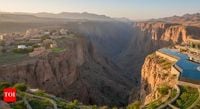UNESCO’s recent announcement of 26 new biosphere reserves across 21 countries marks a watershed moment in global conservation efforts, spotlighting both the urgency and innovation required to protect the planet’s most fragile ecosystems. The move, revealed during the 5th World Congress of Biosphere Reserves in Hangzhou, China, on September 27-28, 2025, represents the largest single-year expansion of UNESCO’s World Network of Biosphere Reserves in two decades, according to Arab News and UNESCO’s official statements.
With this expansion, the global total now stands at 785 biosphere reserves spread across 142 countries, collectively safeguarding over 8 million square kilometres of land and sea—an area equivalent to the size of Australia. These reserves aren’t just about drawing lines around wilderness; they’re living laboratories, as UNESCO describes them, where nearly 300 million people live, work, and interact with nature. The organization’s Man and the Biosphere (MAB) Programme, established in 1971, has always promoted a model that integrates human activity with environmental stewardship, encouraging partnerships among scientists, policymakers, residents, and Indigenous communities.
This year’s list is notable not only for its scale but also for its reach. For the first time, Angola, Djibouti, Equatorial Guinea, Iceland, Oman, and Tajikistan have received biosphere reserve designations. The new sites are as diverse as they are significant. In Angola, the Quiçama Biosphere Reserve stretches along 206 kilometers of Atlantic coastline, encompassing savannahs, forests, estuaries, and islands. It’s home to elephants, manatees, sea turtles, and more than 200 bird species, supporting communities involved in livestock herding, fishing, and honey production. Meanwhile, Iceland’s Snæfellsnes Biosphere Reserve covers 1,460 square kilometers of volcanic peaks, glaciers, lava fields, and wetlands—home to 70 percent of the nation’s plant life and a population that relies on fishing, sheep farming, and tourism.
According to UNESCO, the expansion since 2018 has been dramatic: 142 new sites and an additional one million square kilometers of protected natural areas, an expanse roughly equal to Bolivia’s territory. “With nearly thirty new designations this year, our World Network of Biosphere Reserves has reached a major milestone, now protecting five percent of the planet,” said Audrey Azoulay, UNESCO’s Director-General. “Within these reserves, new ways of balancing nature conservation with sustainable livelihoods are being forged every day.”
Oman’s formal inclusion in UNESCO’s World Network of Biosphere Reserves stands out as a highlight of the 2025 designations. The country’s Al Jabal Al Akhdar (the “Green Mountain”) and Sirrin (Al Sireen) Biosphere Reserves were officially recognized during the Hangzhou congress. Al Jabal Al Akhdar covers about 4,500 hectares in the western Hajar range, rising from 600 meters to nearly 3,000 meters and sheltering 60 percent of Oman’s vascular plant species, the Arabian ibex, Arabian wolf, and more than 71 bird species. Nearly 13,000 people live in its transition zone, continuing traditions of agriculture and grazing. Sirrin Reserve, spanning around 103,888 hectares in the eastern Hajar, is classified as IUCN Category II and hosts over 400 plant species, including many endemics and endangered varieties, alongside the Arabian gazelle and diverse birdlife. It’s also rich in cultural heritage, featuring pre-Islamic rock carvings.
The designation brings both prestige and practical benefits. As reported by local outlets and UNESCO, Oman is now one of six countries to receive its first-ever World Network of Biosphere Reserves site this year. The listings boost legal recognition, unlock international research partnerships, and enhance Oman’s profile for conservation funding and technical cooperation. UNESCO frames biosphere reserves as “living laboratories” that combine conservation with sustainable development, supporting global goals such as the Kunming-Montreal biodiversity framework.
For eco-minded travelers, Oman’s new reserves offer gateways to authentic experiences. At Al Jabal Al Akhdar, visitors can explore terraced rose farms, juniper woodlands, and viewpoints soaring to 3,000 meters, with opportunities to spot Arabian ibex, rare wolves, and over 70 bird species. Activities include guided nature walks, village tours of the Saiq Plateau, and stargazing. The best time to visit is March to May, when the roses bloom. Staying in eco-lodges or locally run guesthouses ensures tourism dollars benefit community livelihoods.
Sirrin Reserve, on the other hand, promises encounters with Arabian gazelles, endangered flora, and ancient rock art. Safari-style drives with licensed guides, birdwatching trails, and heritage site visits are popular activities, but access requires permits from Oman’s Environment Authority—so booking early with registered eco-tour operators is a must. Day trips from Muscat to both sites cost about OMR 70–90 ($180–235) over two days, while a three-day eco-stay with guides and transport runs OMR 200–250 ($520–650). Visitors are encouraged to stick to marked trails, minimize waste, and avoid single-use plastics, reinforcing the ethos of sustainable tourism.
The broader list of new reserves is equally impressive. Indonesia’s Raja Ampat archipelago, now a biosphere reserve, is home to more than 75 percent of Earth’s coral species. France’s first-ever alpine biosphere reserve, Slovenia’s Adriatic coastal wetlands, and Brazil’s world’s largest tropical forest mangroves also made the cut. In the Democratic Republic of Congo, new reserves protect endangered species like forest elephants and bonobos, while in São Tomé and Príncipe, the entire territory of the island nation is now under biosphere reserve status—a first in UNESCO’s history. This has already spurred mangrove restoration, ecotourism, and the discovery of new species.
UNESCO’s approach is rooted in the belief that conservation and socioeconomic development must go hand in hand. António Abreu, head of the MAB Programme, stressed that “biodiversity conservation is a pillar of socioeconomic development.” He warned that excluding local communities from decision-making can lead to conflict and misunderstanding, but including them produces transformative results. The Philippines offers a case in point: coral reefs around Pangatalan Island were restored after scientists and local fishers abandoned destructive practices, with aquaculture training providing sustainable food and income as the reefs recovered.
Private sector partnerships also play a role. The Amazonia Project, supported by LVMH, has combined Indigenous knowledge with scientific research across eight South American biosphere reserves, creating green jobs in agroforestry and regenerative agriculture while protecting forests from wildfires.
Yet, these reserves aren’t immune to global challenges. More than 60 percent have been affected by extreme weather events, from heatwaves and droughts to rising sea levels. UNESCO is increasingly relying on satellite imagery, computer modeling, and digitized historical records to monitor these changes and guide adaptive management strategies. The 2025 designations are a crucial step toward the Kunming-Montreal Global Biodiversity Framework target of conserving 30 percent of the world’s land and sea by 2030. Biosphere reserves, together with UNESCO’s natural World Heritage sites and Global Geoparks, are expected to be central to achieving this ambitious goal.
In a parallel development, the United Nations’ High Seas Treaty—known as the BBNJ Agreement—has now been ratified by 69 countries, surpassing the threshold for entry into force in January 2026. As reported by Jurist, this treaty will provide a legal framework for protecting ocean life in areas beyond national jurisdiction, requiring environmental impact assessments for activities in international waters, promoting sustainable scientific research, and ensuring fair benefit-sharing from marine genetic resources.
With these landmark steps, UNESCO and its partners are pushing the boundaries of conservation, underscoring the interconnectedness of biodiversity, cultural heritage, and sustainable livelihoods. The world’s newest biosphere reserves, from Oman’s mountains to Brazil’s mangroves, offer hope—and a blueprint—for living in harmony with nature in an era of accelerating change.


